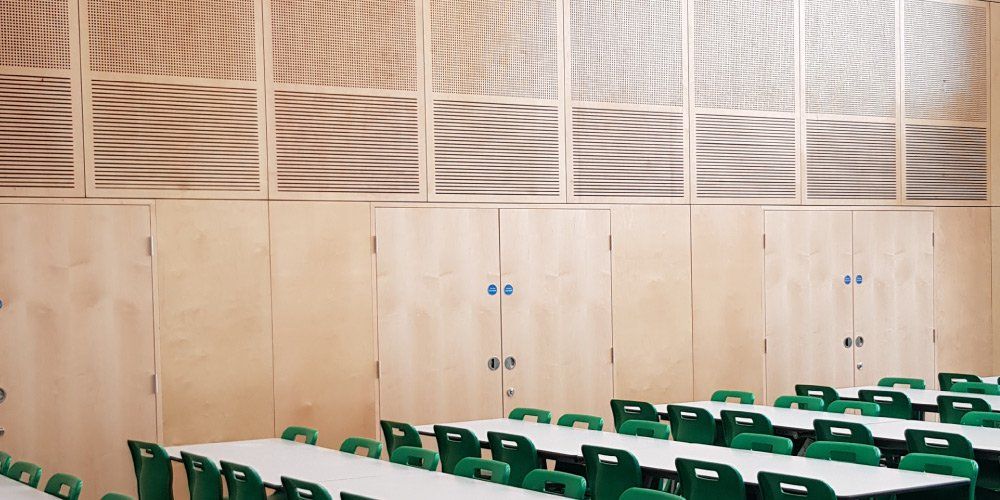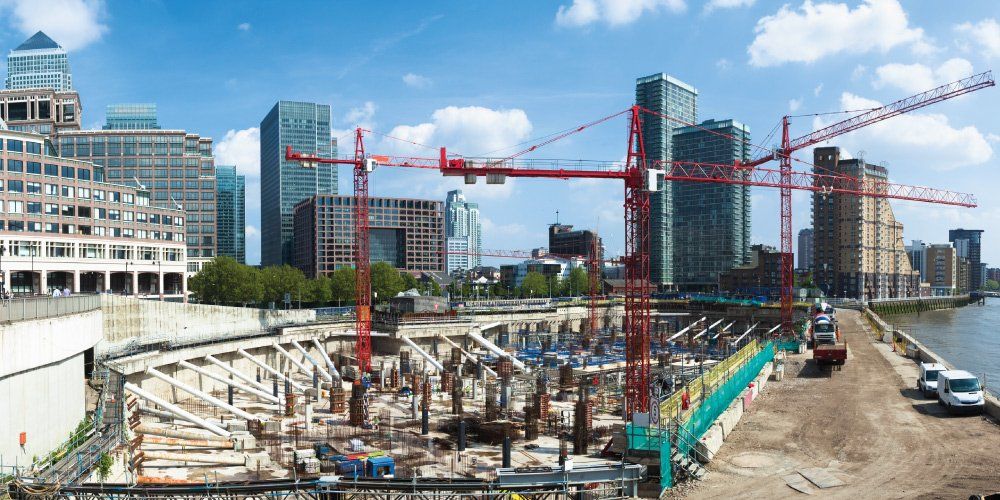Burn-block Fire Retardant Plywood
Fire Rated Plywood to Euroclass B & Euroclass C

We are the UK stockist and distributor of Burnblock treated plywood for the UK market
Burnblock is a non-toxic, water-based product that effectively blocks the supply of oxygen in the fire-threatened material. In this way Burnblock halts the burning process, just as it can counteract the ignition of treated plywood and timber. Burnblock-treated plywood is approved to the highest classification according to the Euroclass system for building products, making it the perfect solution for most building projects.
Burnblock-treated materials can be used for exterior cladding, wood constructions in multi-store buildings, fitting solutions, interior wall and floor constructions.
Why Choose Burnblock ?
Borate Free
- Traditionally, borates are used in fire rated timber and plywood
- Sodium perborate is on the REACH candidate list of substances for very high concern
- Sodium perborate meets the criteria to be classified as toxic for reproduction. Read the ECHA support document here
- Burnblock is borate free
Non-Toxic
- No ingredient of Burnblock is on the REACH list or REACH candidate list
- 100% Organic. In its liquid form, bio-degrades in 14 days
- Non-harmful and non-hazardous. 100% food grade ingredients
- Waste Management - safe disposal, treat as normal plywood
- Handling - no addional masks or gloves
- No additional cost implications for storage, handling & disposal
CE Marked Structural
- Certified structural and CE stamped at original point of manufacture
- The panel is not modified in anyway after CE certification
Resistance & Reaction Certified
- Tested and certified for both resistance and reaction to fire (K1 and K2 test)
EN 13501-1 Class B – s1, d0 K1 K2 10
EN 14135 Resistant’s to Fire K1 K2 K10
EN 45545 – 2 R10, HL1/HL2/HL3 Hazard Level Flooring
EN 45545 – 2 R1, HL1 / HL2 Hazard Level Vertical Surfaces
ISO 5659 – 2 Smoke Generation
ISO 9239 – 1 Radiant Heat
BS 476 Part 6 1989 + A1 209 (Fire Propagation)
BS 476 Part 7 1997 (Surface Spread of Flame)
BS 6853 Annex 3.2 1999 + Amd 1 (Toxic Fume)
BS 6853 Annex D.8.4 1999 + Amd 1 (Smoke Density Panels)
BS 6853 Annex D.8.4 1999 + Amd 1 (Smoke Density Flooring)
Burnblock Fire Rated Birch Plywood Certification:
Suppliers of Contra-Burn® plywood panels: a non-toxic, biodegradable, flame retardant plywood. Importers and distributers of plywood panels with a range of flame retardant treatment & specs. We offer a range of face grades and species to cover most requirements, from decorative, to technical, to structural. Approved suppliers of London Underground spec plywood - Transport for London Approved Plywood
Decorative FR Plywood
Decorative FR Plywood
High grade Birch plywood and Pine plywood for decorative use.
Wall lining, acoustic panels, shop-fitting.
FR Plywood for Construction
FR Plywood for Construction
Structurally rated FR Birch plywood
Transport industry, construction projects, London underground.


- Euroclass B
- Euroclass C
- Transport for London Approved Plywood
- Intumescent Lacquered Plywood
- Intumescent Painted Plywood
- FR Birch Plywood
- FR Pine Plywood
- FR Timber & Cladding
- FR Plywood Wall Panels
- FR Lacquer
Fire Retardant Plywood Distributors
Contra-Burn® Fire Rated Birch Plywood Certification
EN 13501-1 Class B – s1, d0 K1 K2 10
EN 14135 Resistant’s to Fire K1 K2 K10
EN 45545 – 2 R10, HL1/HL2/HL3 Hazard Level Flooring
EN 45545 – 2 R1, HL1 / HL2 Hazard Level Vertical Surfaces
ISO 5659 – 2 Smoke Generation
ISO 9239 – 1 Radiant Heat
BS 476 Part 6 1989 + A1 209 (Fire Propagation)
BS 476 Part 7 1997 (Surface Spread of Flame)
BS 6853 Annex 3.2 1999 + Amd 1 (Toxic Fume)
BS 6853 Annex D.8.4 1999 + Amd 1 (Smoke Density Panels)
BS 6853 Annex D.8.4 1999 + Amd 1 (Smoke Density Flooring)
London Underground Approved Plywood


Treated panels can be supplied to a London Underground Approved Specification. The products we provide meet all of the required standards
(Product Registration Certificate 5305).
Call to discuss any panels for Transport for London and the London Underground.
We can help complete the required paperwork and provide the correct certificates.

Veneered Fire Rated Plywood
We can offer veneered birch plywood to Euroclass B in the following veneers:
Oak - Ash - Maple - Cherry - Walnut - Birch
Panels can also be lacquered and retain the class B certification
Every component is FR rated: plywood > veneer > lacquer. The fire rating is maintained throughout, even if cut, drilled or damaged.
Further Information
Our flame retardant boards are suitable for use in the construction industry. The fire performance required for all materials used in buildings (which includes timber, plywood and wood based panels) is stated in Document B of the UK Building regulations.
Walls and ceilings require class 1 surface spread of flame in accordance with BS476: Part 7 or Euroclass C in accordance with BS EN 13501-1:2002. Higher risk areas such as escape routes and staircases require class 0 surface spread of flame in accordance with BS476: parts 6 & 7 or Euroclass B in accordance with BSEN13501-1: 2002.
Under the Construction Products Directive, there is a desire for European harmonisation of standards for fire retardant treatment of timber. These are known as Euroclass B and Euroclass C. In order to meet Euroclass B or Euroclass C specifications, timber or plywood is tested to EN ISO 11925 (ignitability test) and BS EN 13823: 2002 (SBI or Single Burning Item Test). The SBI test records parameters relating to the rate of fire growth, lateral flame spread and total heat release.
Euroclass classifications are in accordance with BS EN 13501-1 (Fire classification of construction products and building elements) The thresholds for compliance are higher for Euro class B than for Euro class C. Therefore if products conform to a Euro class B they will also conform to a Euro class C, by definition.
In England and Wales, the fire requirements for buildings are dealt with by approved document part B to the Building regulations – Class 0 and Class 1. Euroclass B transposes to Class 0 and Euroclass C transposes to Class 1.
What is Fire Retardant (FR) Plywood and Timber?
FR plywood and timber is material that has been treated to slow the spread of fire propagation and prevent ignition. The spread of flame is measured against a known standard of EN 13501-1.
Why is FR material specified?
Increases the available time to safely evacuate a burning building
Reduces the rate of fire spread
Reduces smoke
By using FR Plywood or FR Timber you are using material that has passed and been approved to a measured standard as outlined in the Building Regulations.Treated material behaves and reacts to fire in a known and quantifiable way.
Declaration Explained: Euroclass B s1, d0
d stands for droplets - burning droplets or particles spread the fire. d0 is the best rating.
s stands for smoke - smoke is often the cause of fatalities. s1 is the best rating.
Class B or Class 0 ?
Class 1 and Class 0 were British standards BS476-7 which had started to be phased out in 2008 and completed by 2013. The standards were replaced by a harmonised European Standard. Document B refers to this harmonisation.
Document B
Building Regulations and Fire Safety Standard (2010 and 2013 amendments) - Fire Safety: Approved Document B
Volume 1 - Dwelling Houses. Volume 2 - Buildings other than Dwelling Houses.
This is a government document that specifies building regulations concerning fire. Public and private buildings 3m or 4m high.
This document outlines how to build a structure to achieve building “sign-off” from the building inspector. A Fire Officer is also involved.
The Architect and Structural Engineer will refer to Document B:
External Link to
Document
B
Resistance / Reaction to Fire
Resistance is measured in time (e.g. a 30 minute fire door) and usually relates to a composite, an assembled product or a constructed setup.
Reaction usually relates to individual material components, such as timber and plywood, where they are sold with a known and measured reaction to fire.
These are two different tests. Burnblock plywood is certified for both reaction and resistance to fire (K1 and K2 test)
CE Mark (Conformité Européenne)
The CE mark indicates that a product meets the requirements of the applicable EC directives and is consistent with its Declaration of Performance (DoP) as made by the manufacturer.
This must be done
before
a product is placed on the market.
Cut to size & CNC machined panels
We can cut, router, drill, chamfer and machine panels
For cutting or machining panels from stock, allow 10-14 working days depending on volumes and complexity
Cutting Service
Transport Industry
Train vehicle bodies, automotive, ships & boats, commercial vehicle building, horse boxes
Stage & Film Sets
Public Spaces
Galleries, museums, reception areas
Wall Lining / Wall Cladding
Birch plywood is resistant to impact, moisture and temperature changes
Acoustic Panels
To improve audio clarity
Sports halls, auditoriums, lecture theatres, public buildings
Retail Spaces
Shop-fitting: wall-lining, shelving, displays
Exhibition Stands
Garden Offices / Garden Rooms
Applications
Commercial Volumes Only
As importers we are set up for commercial volumes.
We can offer smaller volumes for stocked items
Special items would be ordered forward, full packs only, on a 7-10 week lead-time.
